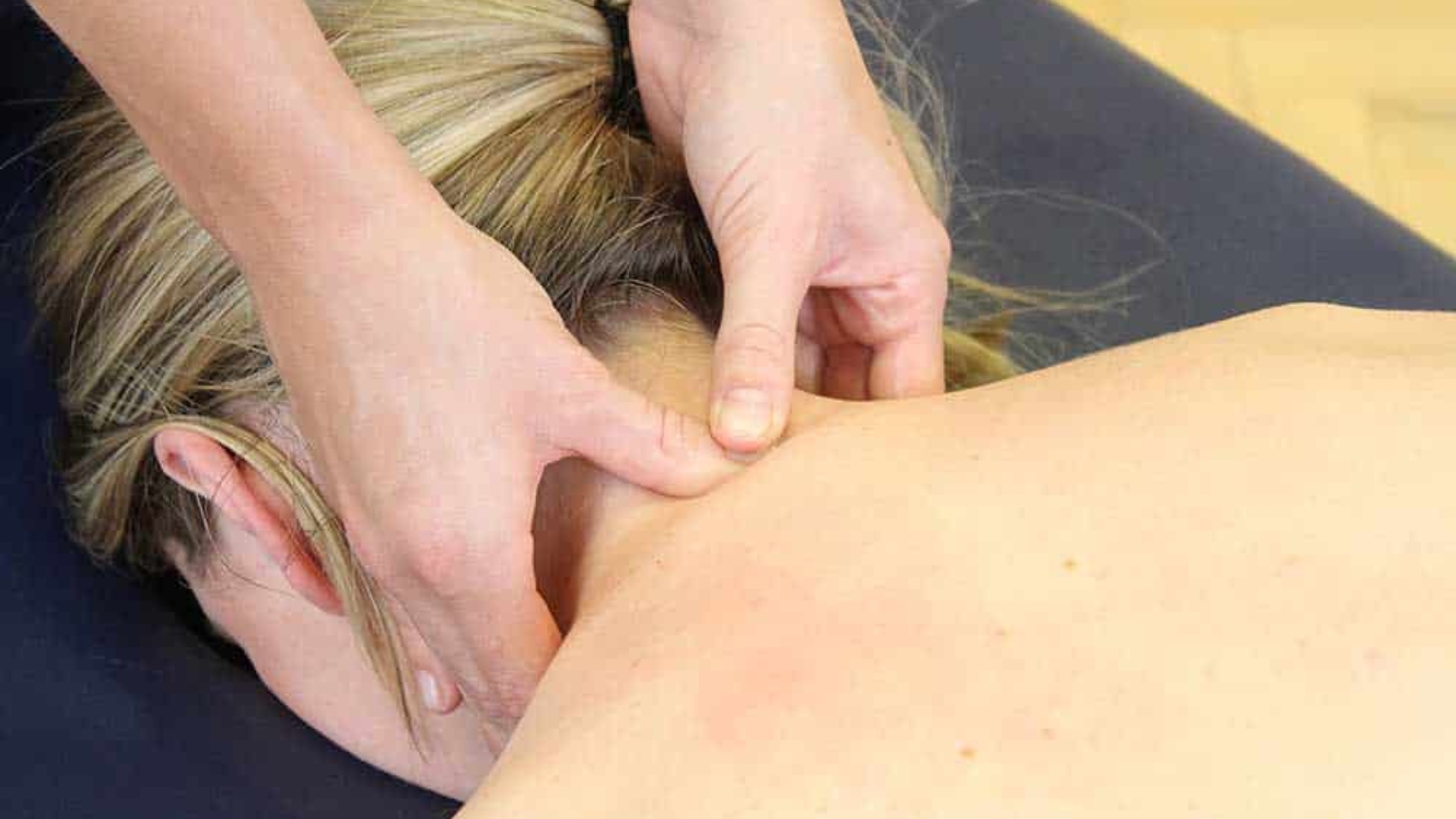Combining the physical manipulation of massage with the calming warmth of heat, heat massage therapy is a therapeutic approach. For millennia, people have employed this all-encompassing method to ease pain, lower tension, and encourage relaxation. Heat massage therapy uses the power of heat to profoundly penetrate muscular tissue, promoting better blood circulation and relieving tension.

Introduction to Heat Massage Therapy
Stress and anxiety in our fast-paced society frequently materialize as physical discomfort, making our bodies cry out for release. The combination of the expert touch of a massage therapist and the calming warmth of heat creates a haven of rest and regeneration known as heat massage therapy. This age-old method has been valued for ages since it is said to reduce pain, release tense muscles, and lead to a deep state of calm.
Imagine yourself encased in a warm cocoon while deft hands work out the anxieties of the day. This is what heat massage therapy is all about. It’s a therapeutic experience that uses heat therapy to activate your body’s healing powers, making it more than just a luxurious delight. Get ready to experience how this soothing combination of touch and heat may help you feel rejuvenated, rebalanced, and invigorated.
Let’s examine the science, advantages, and methods underlying this life-changing encounter.
Understanding The Use of Heat Massage Therapy
The application of heat to the body is the first step in heat massage therapy. There are other ways to create heat, such as using infrared lamps, heated blankets, or hot stones. Warmth aids in blood flow stimulation, muscular relaxation, and body preparation for massage.
Using a variety of techniques, including kneading, stroking, and deep tissue manipulation, the massage component of the therapy targets particular body parts. The synergistic effect of heat and massage amplifies the advantages of each modality when combined.
The Advantages of Heat Therapy for Massage Therapy
Numerous advantages for mental and physical health are provided by heat massage therapy. A few of the main benefits are as follows:
- Pain Reduction: Heat massage therapy is a very useful tool for relieving pain and stiffness in the muscles. Reduced discomfort results from the warmth’s ability to loosen up tense muscles and enhance blood flow.
- Stress Reduction: The body and mind are profoundly calmed when heat and massage are combined. It aids in lowering tension and anxiety while encouraging calm.
- Enhanced Circulation: The application of heat to the massaged area facilitates blood flow, which supplies vital nutrients and oxygen to the tissues. This enhanced blood flow may hasten the healing process and lessen inflammation.
- Relaxation of the Muscles: Heat therapy is a great way to ease tense muscles and increase the range of motion. Warmth facilitates the softening of muscular tissue, facilitating the release of tension.
- Enhanced Sleep: Heat massage therapy can aid in enhancing the quality of sleep by lowering tension and encouraging relaxation.
Various Forms of Heat-Based Massage Therapy
There are various forms of heat massage therapy, and each has certain advantages.
- Hot Stone Massage: This type of massage uses stones that have been heated. The heat-retaining stones offer prolonged pain alleviation and profound relaxation.
- Infrared Massage: Warming the body with infrared heat either before or during a massage is the purpose of infrared therapy. Deeper tissue penetration allows infrared heat to provide focused relief.
- Sauna Massage: Before getting a massage, patrons of certain spas can unwind in a sauna. Detoxification and relaxation may benefit greatly from this combo.
The Operation of Heat Massage Therapy
The way heat massage therapy functions is by fusing the healing properties of massage with heat. The heat promotes blood flow and relaxes muscles, preparing the body for massage. After that, the massage techniques help to induce relaxation, lessen discomfort, and release tension.
Blood vessels widen as a result of the heat’s penetration of the muscular tissue. By supplying the area with more oxygen and nutrients, the increased blood flow aids in the healing of injured tissues and lowers inflammation. To further aid in pain reduction and relaxation, heat also triggers the body’s natural painkillers, endorphins, to be released.
Including Hot Stone Massage in Your Wellness Practice
Think about adding heat massage therapy to your wellness regimen to get the most out of it. Here are some pointers:
- Frequent sessions: To maintain your best health, schedule frequent heat massage therapy sessions.
- Combine with other therapies: For maximum effects, combine heat massage therapy with other calming methods like yoga or meditation.
- Listen to your body: Pay attention to your body. Observe your body’s cues and modify the massage pressure and heat level accordingly.
- Hydrate: To assist in eliminating toxins, sip on lots of water following your heat massage therapy.
A potent technique for fostering relaxation, lowering pain, and enhancing general well-being is heat massage therapy. You can feel the body- and mind-transforming effects of heat and massage by learning about the advantages and implementing this therapy into your self-care routine.
Warning Signs and Symptoms of Heat Massage Therapy
Most individuals find heat massage therapy to be safe, however, there are a few things to be aware of:
- See your Physician: Before receiving heat massage therapy, find out if you have any underlying medical issues. If you have circulatory issues, diabetes, or heart disease, this is extremely crucial.
- Avoid burns: To prevent burns, make sure the heat source is not too hot. Observe your body’s cues and inform your therapist if you experience any discomfort.
- Talk to your Therapist: Let them know if you feel uncomfortable throughout the massage. To make sure you have a comfortable session, the therapist might change the pressure or temperature.
- Hydrate: Before and after your heat massage therapy session, sip on lots of water. This keeps you from becoming dehydrated and replaces fluids lost through perspiration.
Selecting a Heat Massage Provider
Selecting a licensed therapist is essential to ensuring you get the most out of your heat massage therapy session. Here are some pointers:
- Seek Credentials: Verify the therapist’s credentials and experience using heat therapy. You can enquire about the therapist’s background and familiarity with heat therapy methods.
- Examine Reviews: To locate a trustworthy therapist, look through internet reviews or get referrals from friends and relatives.
- Talk about your Requirements: Before your appointment, talk with the therapist about your requirements and objectives. This will assist the massage therapist in customizing the treatment to meet your needs.
Heat Massage Therapy: A Sensory Oasis
In addition to being a physical therapy, heat massage therapy is a sensory experience that puts you in a state of deep relaxation. Your body is enveloped in a soft, comforting cocoon as the therapist’s expert hands release tension and reestablish equilibrium.
The Facts That Connect What You Feel
The combination of heat and massage has a potent synergy. Heat causes blood arteries to widen, improving blood flow and muscle oxygenation. By eliminating metabolic waste products, this increased blood flow lowers inflammation and speeds up the healing process. Massage simultaneously works on soft tissues, releasing endorphins, which are the body’s natural analgesics, and breaking down adhesions.
Beyond Relaxing: The Healing Advantages
Although there is no denying that heat massage therapy is luxurious, its advantages go far beyond rest. Research indicates that this approach may be useful in the treatment of long-term pain disorders including fibromyalgia and arthritis. Joint mobility can be enhanced and stiffness can be decreased as a result of the improved blood flow and relaxed muscles.
Furthermore, studies have connected heat massage therapy to improved mood and decreased anxiety. The treatment’s relaxing effects can aid in reducing depressive symptoms and fostering emotional health.
Customizing Your Experience with Heat Therapy
To optimize the advantages of heat massage therapy, take into account these customization choices:
- Essential Oils: You can increase the therapeutic and relaxing effects of massage oil by adding essential oils such as eucalyptus, lavender, or chamomile.
- Music Therapy: Calm, soothing music can enhance the relaxing experience by fostering a peaceful atmosphere.
- Ambient Lighting: Candlelight or dimmed lighting can create a peaceful ambiance.
- Adjustable Heat Levels: To accommodate different tastes, some therapists provide a range of heat settings.
DIY Advice for At-Home Heat Massage Therapy
Although receiving heat massage therapy from a professional is an opulent experience, you can also use parts of it in your at-home self-care regimen. Before self-massaging with lotion, think about using a heated massage cushion or having a warm bath. However, keep in mind that home imitations of professional massage therapists‘ specific training and skills fall short.
You can decide whether to add heat massage therapy to your wellness regimen by being aware of the benefits and science behind it. The benefits to your body and mind are immense, regardless of whether you decide to embark on a professional session or make your own.
Conclusion
An invitation to relax, revive, and reestablish a connection with your body is extended by heat massage therapy. It’s a sensory adventure that goes beyond unwinding and has significant emotional and physical advantages. Through the integration of the healing properties of heat and the deft technique of massage, this age-old method opens up a whole new realm of wellness.
Following a heat massage, you should experience a surge of fresh energy and clarity. Your muscles will no longer be tense; instead, a deep sense of tranquility will take its place. Adding heat massage therapy to your self-care regimen is an investment in your general well-being.
Accept the warmth, give in to the pressure, and let the life-changing effects of heat massage therapy.








